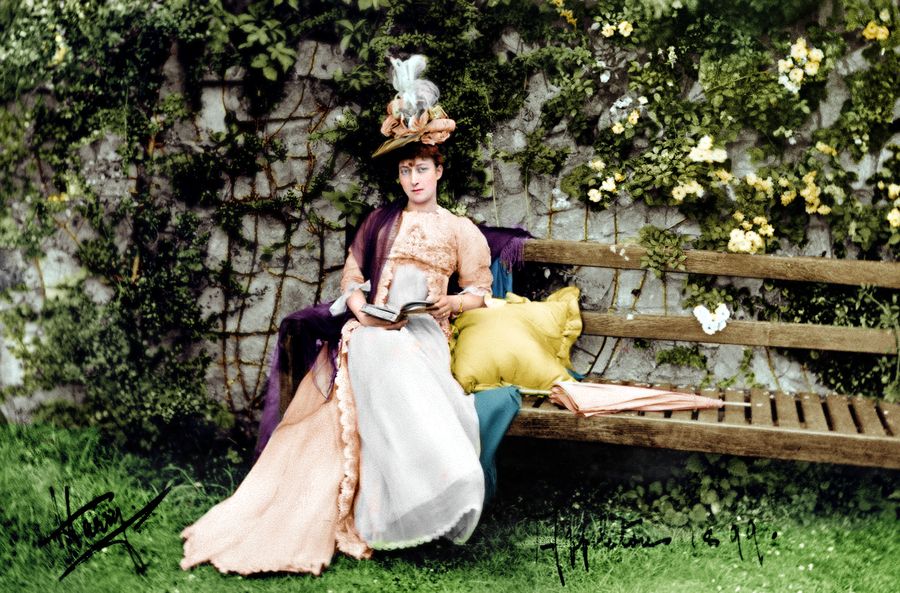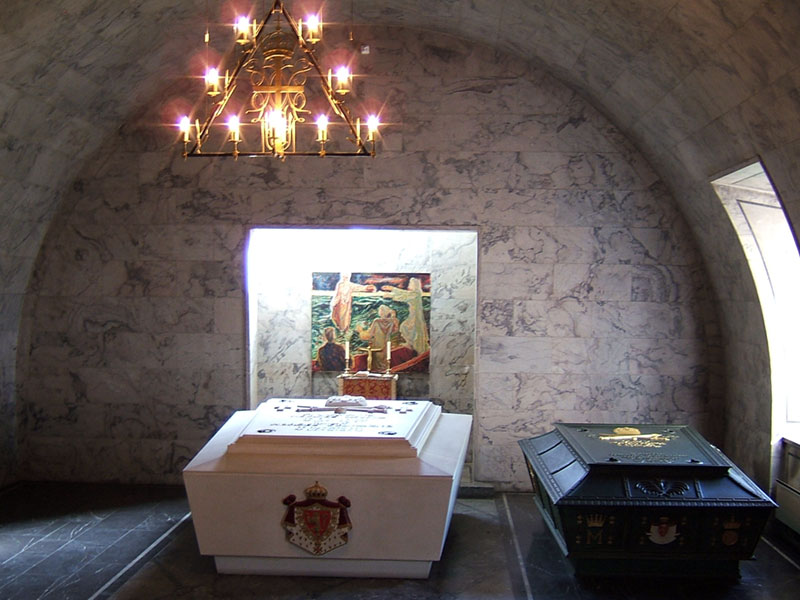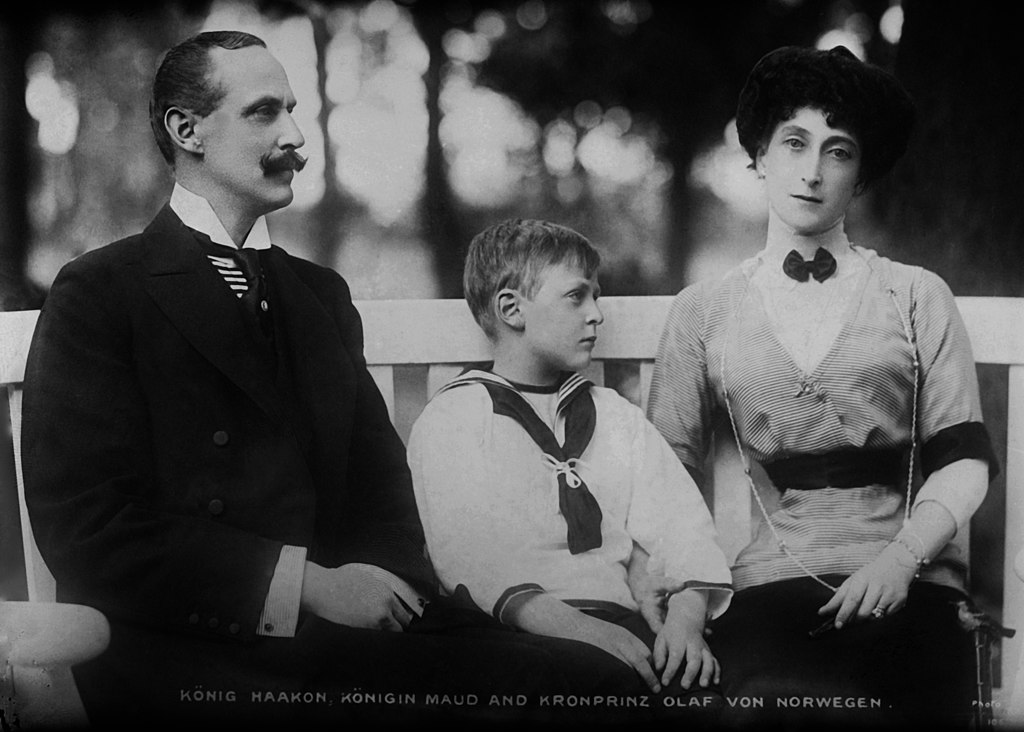
This year marks 85 years since the death of Queen Maud of Norway, the last English born royal to become consort of another country. The British princess who married a Danish prince and ended up as a Norwegian queen has left her mark on the country she came to call home. In Oslo today, we can find many traces of the queen. Take a look at some of them here, so if you visit Oslo sometime in the future you can walk in the footsteps of Queen Maud.
The Royal Palace in Oslo

The Royal Palace in Oslo was built between 1824 and 1849 and has housed many kings. However, Maud and her husband, King Haakon, were the first to use the castle as a permanent home when they arrived in Norway in 1905.
When Maud came to the castle in 1905, in reality, she came to an empty castle. The Swedish royal family had taken with them much of the furniture and paintings when they left the palace following the dissolution of the union. Under Maud the castle was filled with new furniture, most of which is still used today. Maud also purchased an art collection of hundreds of paintings over many decades. Most of the collection was painted by Norwegian artists, so they received financial support. Most of the paintings are on display at the palace today or kept in the royal collections.
You can visit the castle all the time, but you can only see the inside of the castle in the summer, when the king and queen use Bygdøy royal estate as their summer residence. Then you can see all the traces of Queen Maud that still exist in the castle.
The Queen Maud statue

Just west of the Royal Palace, at the end of the Palace Square, stands a grand monument to Queen Maud. The statue of Maud in the Palace Park in Oslo was created by Ada Madssen, and was unveiled by King Olav V in 1959. Each year the gardeners of the castle create new artworks of flowers around the statue. In the summer of 2018, around 7,000 tulips surrounded the statue of Queen Maud. If you walk past the castle it is impossible not to see this statue that draws a lot of attention and is often referred to as the park’s most beautiful statue.
A copy of this statue of Queen Maud is located at the Norwegian Ambassador’s residence in London. This was unveiled by King Harald and Queen Elizabeth II in 2005.
The Royal stables

The old stables are located in the Queen’s Park in the south-west of the Palace Park. The facility was completed at the same time as the Castle, in 1849, and had space for 38 horses. When Queen Maud came to Norway in 1905, she oversaw some much needed work at the stables. Queen Maud was a good rider and very interested in horse riding. Under her leadership, the stables were expanded and rebuilt between 1908 and 1911. The model was the stables at Buckingham Palace, the Royal Mews.
The stables were in use until 1940. After that they were use as room for storage and as a garage, until the decision to rebuild parts of the building of Queen Sonja KunstStall and open it to the public in 2017 as an art gallery.
Queen Maud Street

The “Queen Maud`s Street” (in Norwegian “Dronning Mauds gate”) is a short street named after the queen in downtown Oslo. The street goes from the town hall square at King Olav V’s place and towards the west of the city-centre. The street has four lanes and, since the Second World War, it has been part of a modern business area. There are also streets named after the Queen in Stavanger and Bryne, in west Norway. At the bottom of the street is a statue of King Olav, Maud’s son. At the top of the street is a statue of King Haakon VII, Maud’s husband.
Bygdøy Royal Estate

Bygdøy royal estate is located on Bygdøy in Oslo and is approximately 2,000 acres, with 740 acres of cultivated land. The farm has been royal property since 1305 when King Håkon V Magnusson gave the farm to his wife, Queen Eufemia. The farm has since then been owned or made available to the Norwegian, Danish-Norwegian or Swedish-Norwegian royal houses.
Maud organized the estate so that the main building was renovated and modernized and King Haakon VII and his family, and later King Olav V, used it as a permanent summer residence from 1906. Queen Maud spent a lot of time on the royal estate. In particular, the queen loved to spend time in the garden and further developed it according to English models. The closest garden around the main building was fenced in 1913. The property is not open to visitors. However you can see some of the buildings through the fences.
The Royal Mausoleum

In November 1938, Queen Maud visited London. This time, however, it was not just for the sake of fun. Maud needed a stomach operation but three days after, on November 20, 1938, she died of heart problems. On November 24, 1938, the Queen’s coffin was taken by sea to Norway on the British battleship HMS “Royal Oak”. The funeral ceremony was held at Akershus Fortress and the Queen’s sarcophagus was set in the Margaret Hall, pending a permanent mausoleum. During World War II, the sarcophagus was kept secret in the Old Aker church. In 1948, it was transferred to the Royal Mausoleum at Akershus Castle.
For those who want to visit Queen Maud’s last resting place, this is to be found at Akershus Fortress. The royal mausoleum is a royal burial chapel at Akershus Castle. In the mausoleum, there are two sarcophagi; in a white marble sarcophagus, King Haakon VII and Queen Maud rest, while in a green monument rest King Olav V and his wife, Crown Princess Märtha. In the wall of the crypt at the mausoleum are the remains of King Håkon V and Queen Euphemia.
Queen Maud of Norway

Queen Maud was born in London on November 26, 1869. She was the English princess, daughter of the late King Edward VII and Queen Alexandra of Great Britain. She married her cousin, then Prince Carl of Denmark at Buckingham Palace in 1896 and settled in Copenhagen. They had a son, Alexander (later King Olav V), in 1903. Maud became the first Queen of an independent Norway following the dissolution of the union with Sweden in 1905 when Prince Carl became King Haakon VII of Norway.
Although Queen Maud was not always very visible to the public, she undertook a number of social and cultural tasks. She pursued extensive charity work in private and was behind the establishment of Queen Maud’s Relief Fund in 1914. She was heavily involved in the education and training of her only child, Crown Prince Olav’s . She also had a great sense of outdoor life. She enjoyed both riding and walking with her many dogs. Queen Maud maintained a strong connection with Britain throughout her life, and stayed in England for a period of each year. Queen Maud died on Nov

